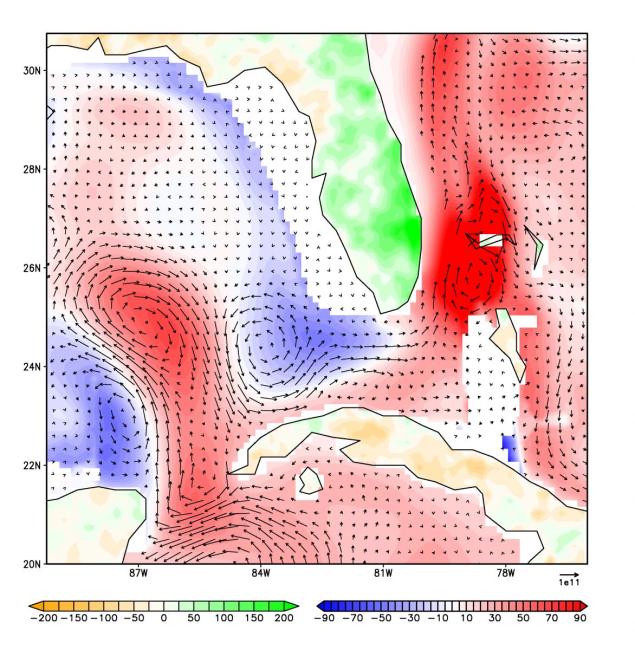Future changes in ocean currents around Florida impact rainfall over land
Robust surface ocean currents around Peninsular Florida, namely the Loop and the Florida Currents, are shown to affect the terrestrial wet season of Peninsular Florida. New research by Misra and Mishra in the Journal of Geophysical Research: Atmospheres shows that differences in the ocean bathymetry (or topography) of two novel numerical climate model integrations can influence the ocean currents and their impact on regional climate. These changes to bathymetry dislocate and modulate the strength of these currents and thereby affect the overlying sea surface temperature (SST) and upper ocean heat content.

This study shows that a weaker surface ocean current system produces colder coastal SST’s along the Atlantic coast of Florida, thereby reducing the length and the total seasonal accumulation of rainfall in the wet season of Peninsular Florida relative to the simulation in which these currents are stronger. Further analysis reveals that overlying surface evaporation and atmospheric convection are modulated as a result of these forced changes to the temperature of the upper coastal Atlantic Ocean. This consequently changes the moisture flux convergence over land leading to changes in the length and the distribution of daily rain rates over the duration of the wet season. The results of this study have implications on interpreting future changes to the hydroclimate of Peninsular Florida, such as the influence of climate change and low frequency changes to the Atlantic meridional overturning circulation that comprises of the Loop and the Florida Currents as part of its upper branch.
The oceanic influence on the rainy season of Peninsular Florida (Journal of Geophysical Research: Atmospheres)
Florida State University
Topics
- Water Cycle
- Weather
- Modeling
- Atlantic Ocean
- Climate Change
- AMOC
